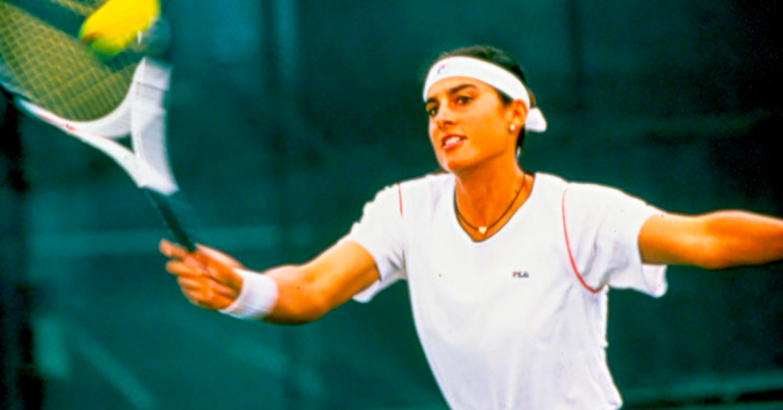PORTRAITS: GABRIELA SABATINI
Welcome back to Portraits, our blog series that shines a spotlight on the stars of FILA’s rich history.
From Andrea Jaeger to Boris Becker to Jennifer Capriati, we’ve already featured several remarkable child prodigies in sport. Gabriela Sabatini, the former Argentine tennis player and one of South America’s most celebrated athletes, certainly belongs in that elite group.
Born in Buenos Aires in 1970, Sabatini began playing tennis at just seven years old, encouraged by her brother, who gifted her a steel Condor racket; a difficult tool for a child, but a challenge that helped shape her extraordinary talent. Her breakout moment came in 1983 when she won the Orange Bowl in Miami Beach, a prestigious junior tournament that has launched many top players’ careers. Just a year later, she was ready to move to the United States and turn professional.
In 1985, the day after her 15th birthday, Sabatini became the youngest-ever semi-finalist at Roland Garros. Though she lost to Chris Evert, the tennis world quickly took notice. Her graceful one-handed backhand, court awareness, and fierce resilience made her a rising star.
The 1980s and 1990s were a golden age for women’s tennis, and Sabatini held her own against some of the game’s greatest legends. At the 1988 Seoul Olympics, she reached the final but was bested by Germany’s Steffi Graf—launching a rivalry that would define both of their careers. The two faced off 40 times, with Graf taking more wins overall, but Sabatini remains the only player to defeat her 11 times.
Reflecting on their relationship, Sabatini once said:
“Steffi was one of the best opponents I ever had. I think she brought out the best in me. Over the years we became friends and we still talk a lot today. The tournaments we played are unforgettable. The Olympics were an incredible experience: it’s not often that we tennis players get to represent the countries we come from.”
Another memorable rival was Monica Seles. The pair met on court 11 times, but their most epic encounter came at the 1990 Virginia Slims final at Madison Square Garden, where Seles triumphed after a grueling 3-hour, 47-minute battle. Despite the intensity of their matches, the two shared a genuine friendship. In her 1996 autobiography From Fear to Victory, Seles wrote:
“Gaby was the only player who supported me after the accident in Hamburg. She thought like a person, regardless of rankings, she didn’t think about sponsors or business. She’s different from the other players on the tour.”
Such words reveal why “Gaby” became more than a tennis star; she became a beloved public figure. In 1990, as Diego Maradona led Argentina in the World Cup final against Germany at Rome’s Olympic Stadium, much of the Italian public’s attention turned to Sabatini, who was simultaneously playing in the Internazionali Tennis Tournament. The Italian capital even earned the nickname Gabyland in her honor.
Sabatini retired in 1996 at just 26, concluding an 11-year career that included 27 titles, a Grand Slam victory (the 1990 US Open), and an Olympic silver medal (Seoul 1988). Today, she divides her time between Argentina and Switzerland. A long-time lover of fashion and beauty, she has successfully ventured into entrepreneurship and her fragrance line includes a signature scent inspired by a red-orange rose variety cultivated in 1992 and named after her.
In 2006, Gabriela Sabatini was inducted into the International Tennis Hall of Fame. Fittingly, the award was presented by none other than her lifelong friend and rival, Steffi Graf.
Torna agli articoli!


